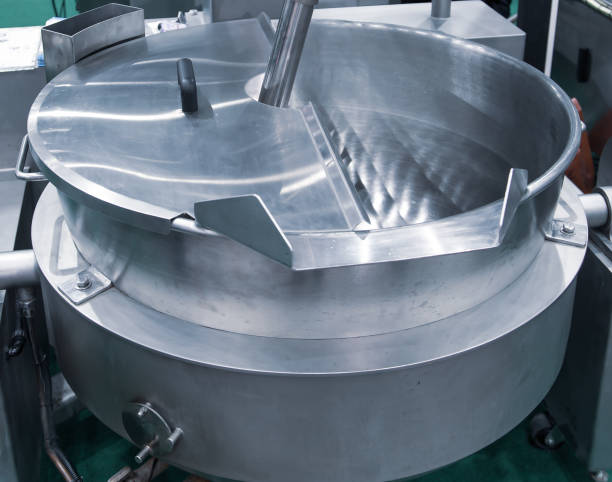Innovative Applications of Industrial Blenders in Manufacturing
Contents
Table of Contents
- Introduction to Industrial Blenders
- Role of Blenders in Different Industries
- Key Features of Modern Industrial Blenders
- Innovative Mixing Techniques
- Benefits of Efficient Blending
- Challenges in Blender Technology
- Future Trends in Industrial Blending
- Conclusion: The Path Forward
Introduction to Industrial Blenders
In the vast manufacturing landscape, industrial blenders are the unsung heroes that keep production lines flowing smoothly. These versatile machines are responsible for the seamless mixing of various materials, ensuring that products meet the highest standards of quality and consistency. Industrial blenders have found their niche in numerous sectors, from blending food ingredients to creating homogeneous pharmaceutical compounds.
Their role extends beyond mere mixing; they are integral in maintaining the production line’s efficiency. By ensuring that each batch of material is uniformly processed, industrial blenders help enhance product quality while minimizing waste. This effectiveness results in substantial cost reductions for producers, positioning industrial blenders as an essential resource in the competitive manufacturing environment.
Role of Blenders in Different Industries
Industrial blenders’ versatility makes them indispensable across multiple sectors. In the food industry, these machines blend ingredients from sauces and soups to beverages and baked goods. Consistent blending is essential for flavor uniformity and texture control, directly impacting consumer satisfaction.
Similarly, in the pharmaceutical industry, precision in blending ensures that medications are effective and safe. The slightest deviation in mixture ratios can lead to significant variances in a drug’s efficacy. Industrial blenders are also critical in the chemical industry, where they mix compounds for paints, adhesives, and other chemical products. Each application demands a unique set of capabilities from the blenders, requiring them to be robust, reliable, and adaptable.
Key Features of Modern Industrial Blenders
Modern industrial blenders are marvels of engineering, equipped with features that enhance their performance and adaptability. One notable innovation is the use of programmable controls, allowing operators to tailor the blending process to specific requirements, thus optimizing the quality and consistency of the end product.
Energy-efficient motors have become standard in new blender models, addressing environmental concerns and reducing operating costs.
Moreover, sturdy construction materials guarantee these machines can endure the challenges of continual use in industrial settings. Improvements in safety systems ensure that employees are safeguarded during work, minimizing the chances of injury and operational interruptions.
Innovative Mixing Techniques
Recent developments in innovative mixing techniques have transformed the landscape of blending technology.
Methods like high-shear mixing and vacuum blending are gaining popularity because they enhance mixture consistency, lower energy usage, and speed up the blending procedure.
High-shear mixing involves using a cutting rotor that rotates at high speeds to finely mix materials, while vacuum blending eliminates air within the mixture for more consistent results. These advanced techniques allow manufacturers to achieve higher product quality and performance standards, ensuring that their products meet industry regulations and consumer expectations.
Benefits of Efficient Blending
Effective blending offers a variety of advantages that go beyond simple cost reductions. Efficient blenders are crucial in creating a more sustainable manufacturing process by minimizing waste and improving product integrity. They likewise aid in confirming that every product complies with strict quality standards, essential for upholding consumer trust and satisfaction.
In addition to improving product quality, they increased automation and precision in blending, leading to better material handling and ease of post-processing. This not only optimizes the production process but also enhances the overall efficiency of the manufacturing operation. As a result, manufacturers can enjoy reduced downtime and increased throughput, which is critical for maintaining a competitive edge in the market.
Challenges in Blender Technology
Despite their numerous advantages, industrial blenders have challenges. Manufacturers must address common concerns such as high energy consumption, noise levels, and maintenance requirements, which can impact the operational efficiency and long-term sustainability of blending processes.
However, solutions are emerging to tackle these challenges head-on. Innovations in energy-efficient designs and noise-reducing technology are helping to mitigate these problems. By reducing energy consumption, manufacturers can lower their carbon footprint while maintaining high production efficiency. Noise-reduction technology enhances the working environment, making it safer and more comfortable for operators.
Future Trends in Industrial Blending
The future of industrial blending technology is bright, with trends focusing on integrating intelligent automation and advanced digital capabilities. The industry is moving towards future trends in industrial blending that include AI-driven systems, which can learn adaptive blending processes based on real-time data insights.
These advancements offer manufacturers unprecedented control over their blending operations, enabling them to adjust quickly to changing production needs. As blending technology evolves, it will become even more vital in optimizing manufacturing efficiency and driving industry growth.
Conclusion: The Path Forward
Reflecting on the various aspects of industrial blending, it is clear that these machines will continue to play a pivotal role in manufacturing. By embracing technological advancements and addressing current challenges, industrial blenders can drive significant operational efficiency and product quality gains.
The continual evolution in blending technology holds immense potential. As the industry advances, manufacturers must remain agile, adopting new technologies to leverage the full benefits of modern industrial blenders. This foresight will ensure they stay competitive and sustainable in an ever-changing marketplace.

